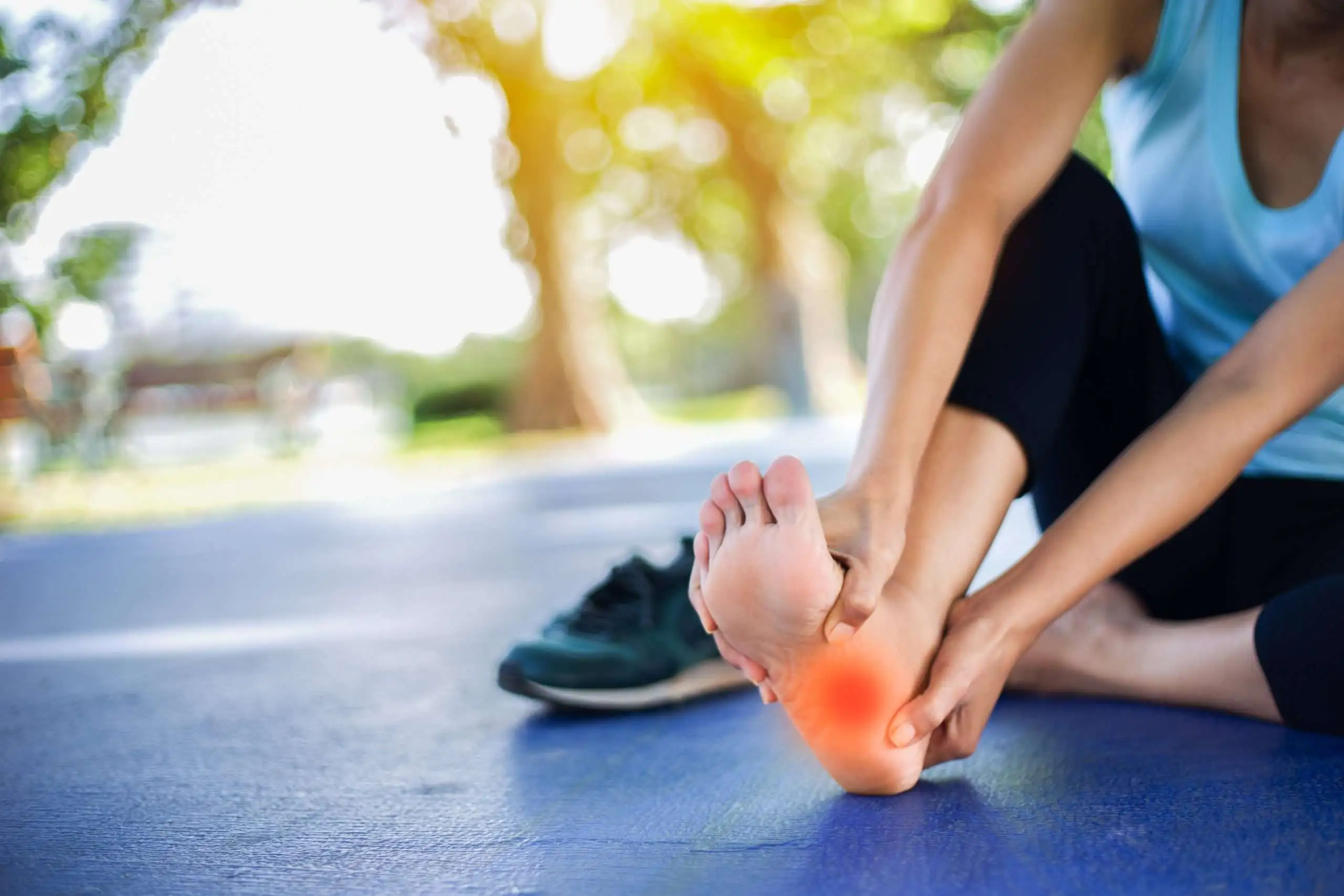
Sports are known to help people maintain a healthy weight and increase their levels of endorphins, or “happy” hormones. But it is advisable to watch out for minor pains and injuries so you can treat them before they worsen. This article will go through some of the most common sports-related foot injuries and their respective treatments.
Sports foot injury: Plantar Fasciitis
The plantar fascia is a fibrous membrane that runs along the sole of your foot from the heel to the toes. Plantar fasciitis occurs when this tissue becomes inflamed or injured. This damage might manifest as heel pain, a burning sensation, or soreness in the sole of the foot.
This sports foot injury, which occurs when there is a lack of warm-up or stretching, is common among athletes who run, dance, or jump. It may also be brought on by inadequate posture or misuse of the foot muscles while wearing uncomfortable shoes.
Make sure you buy your shoes specifically for your activities to prevent it. Before engaging in sports, warm up your feet, then stretch them afterward. It is recommended that you see a podiatrist for more severe cases of this foot problem.
Sports foot injury: Ankle Sprain
Runners and hikers often suffer from ankle sprains, which are common sports injuries. A sprain occurs when the ligaments become slightly strained. It is a more severe sprain when the ligaments are damaged; it can take up to 6 months to heal and requires additional care.
A sprain is a sports injury that involves the ligaments of the ankle and makes it painful to use the foot. If this happens, your foot needs a lot of rest as you keep an eye on its recovery. To reduce swelling, apply ice for ten minutes every two hours. In order to facilitate optimal healing, it is advised to resume physical activity only after three days.
Schedule a visit with your podiatrist if the pain worsens, and the foot swells. In all cases, consulting a professional will prevent poor healing and the recurrence of pain.
Sports foot injury: Foot blister
You could consider a foot blister to be a minor foot injury. But occasionally, as marathon runners know a bit too well, the blister can make every step a nightmare.
A blister is a lesion of the epidermis’ superficial layers that develop as a result of prolonged rubbing of the foot. Although it can happen anywhere under the arch of the foot, it is seen more commonly toward the heel. While ill-fitting or too-inflexible shoes are frequently to blame, a blister can also develop following a long walk or run.
Blisters can be prevented by keeping your feet dry by using talcum powder before wearing socks and breathable shoes. You can also use protective bandages before exercise.
Avoid squeezing or puncturing a blister while cleaning it. There is less risk of infection in a closed blister than in a skin lesion. It is advisable to see a podiatrist if the pain lingers on and keeps you from getting back to your everyday activities.
Sports foot injury: Stress fracture
A stress fracture is a sports foot injury that is commonly experienced by athletes who do not give their limbs sufficient rest. Stress fractures among runners are brought on by microfractures brought on by repetitive impacts.
Stress fractures can happen as a result of overuse, poorly fitting shoes, not getting enough rest, or even a loss in bone density. Because it progresses slowly, it can be challenging to identify, but signs like swelling or discomfort that worsens during exercise but goes away during rest should be addressed very seriously.
Taking vitamin D is a good idea to maintain your bone density. Include relaxation days as well; they are just as crucial to your athletic schedule as active days.
Treatment options for stress fractures include immobilization, custom orthoses, and therapeutic taping. It is always preferable to seek advice from your doctor before getting an ultrasound or x-ray of the affected area.
Preventing a foot injury to keep playing your sport
FootNetwork’s podiatrists provide a comprehensive podiatric assessment and follow-up meetings to help you keep playing sports and avoid sustaining a foot injury. Contact our experts right away to get the help you need.

